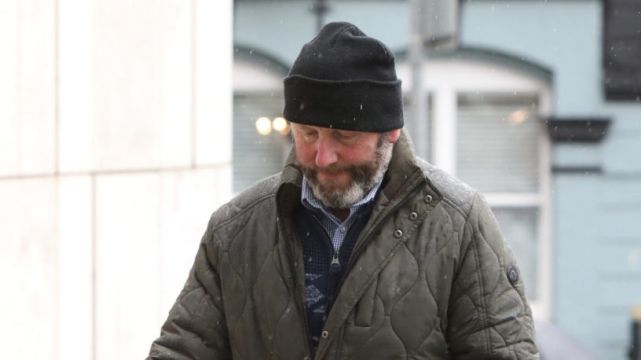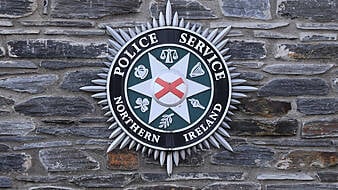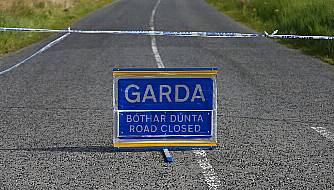An accident investigator has told the trial of Michael Scott that before she died, the accused's 76-year-old aunt appears to have been walking away in an attempt to escape the impending impact of the teleporter that Mr Scott was driving.
John Hayes also told the trial that a pedestrian would have been "clearly visible" through the back window of the teleporter and that "flailing" injuries to Ms Treacy's left arm were consistent with a "very quick" or "aggressive" change in direction from reverse to forward and could be consistent with the rotation of the wheel on her arm.
In cross-examination Mr Hayes agreed that nobody knows if Ms Treacy was standing or lying down before Mr Scott reversed over her. He denied that his report contained speculation or that his evidence in front of the jury was different to what he had written in his report. He also rejected a suggestion by counsel that he was not qualified to comment on the injury to Ms Treacy's arm.
Mr Scott (58) of Gortanumera, Portumna, Co Galway has pleaded not guilty to murdering Ms Treacy outside her home in Derryhiney, Portumna, Co Galway on April 27th, 2018. The prosecution case is that Mr Scott deliberately ran over Ms Treacy following a long-running dispute over land. Mr Scott's lawyers have said her death was a tragic accident.
Injuries
Mr Hayes told prosecution counsel Dean Kelly SC that he looked at photographs of Ms Treacy's injuries and formed the view that the flailing injury to her left hand was "not consistent with a vehicle reversing over the deceased, coming to a stop and moving forward." He said the injury was consistent with "a far more aggressive action and could be consistent with the rotation of the wheel while on the limb." He explained that by "aggressive" he was not commenting on the driver's intent but on the "high torque" of the vehicle which allowed it to change from reverse to forward "very quickly".
He added: "The fact the machine rolled over her back would suggest she was walking away from the machine as it approached her in an attempt to escape the impending impact of the vehicle." Mr Hayes described what he said were two distinct tracks on Ms Treacy's body suggesting two passings by the teleporter.
Mr Hayes also described a reconstruction that he did whereby he got a garda wearing a light blue cardigan similar to the one worn by Ms Treacy to stand one metre behind the teleporter. Mr Hayes then took a series of photographs to show what was visible from the seat of the teleporter cabin. The photos were given to the jury.
Mr Hayes said that visibility was "significantly" reduced by dirt and grime on the back window but "a pedestrian with a light blue cardigan would be clearly visible". The expert witness said the left rear view mirror of the teleporter was missing and it was unlikely the driver would have been solely depending on the right hand mirror because it provided very poor visibility.
Most of the obstructions in the yard were to the driver's left, he said, and it would have been easier to lean out the open window on that side. To view objects to the rear while reversing, the driver would have to rotate 90 degrees but, he added: "This would be a normal action for an agricultural vehicle driver."
In his report Mr Hayes wrote that the deceased would have been visible had the driver been keeping a proper lookout and if he had maintained the vehicle in a reasonable condition he would have had a clear panoramic view for 300 degrees with an impeded view to the rear and right.
Ms Treacy's only viable route to where she was found was a 45 metre walk from her back door to a driveway and into the yard, he said. At a reasonable ambulant walking gait, he said, that journey would take 30 seconds. For a less ambulant gait, it might take 45 seconds.
Mr Hayes also reversed the teleporter over two tyres that he had placed on the ground to get a sense of what would be felt by the driver. He said the sensation of driving over the tyres would be "acutely noticeable to the operator".
Mr Hayes said he would have preferred to use a fake cadaver for the test but they cost €150,000. There is, he said, a huge amount of research on injuries to pedestrians when colliding with the front of a vehicle but there is no research on the dynamics of an impact between the rear of a teleporter and a human. In driving over the tyres, he said he was carrying out a subjective test and was not suggesting that the test perfectly mimicked the sensation of driving over a human.
Cross-examination
Under cross-examination Mr Hayes told defence counsel Paul Greene SC that he is an independent expert and does not advocate on behalf of the party that engages him. "My first responsibility is to the court," he said.
Mr Hayes said he does his best to be objective in giving evidence but like all people he has his prejudices.
Mr Greene suggested that Mr Hayes is not qualified to comment on the flailing injury to Ms Treacy's left arm. Mr Hayes said that he looked at the damage to the hand and formed a view. "I accept it is not within my expertise, I'm not a pathologist, but looking at the photo it is manifestly obvious." He said the injury suggests "some significant action" and added that as an engineer he is entitled to comment on the strength of materials.
Mr Greene put it to him again that he is not qualified to comment on the flailing injuries.
Mr Hayes replied: "I wouldn't share that view. I shared a view, it's a matter for the jury to decide the validity of that view."
The witness denied that it was speculative to approximate the movement of the machine over Ms Treacy's body. He also explained that while the garda who stood behind the teleporter in the photos was more than six feet tall, he got him to crouch down to Ms Treacy's height, at five feet six inches.
He agreed with Mr Greene that nobody knows whether Ms Treacy was standing or on the ground when Mr Scott started reversing the teleporter.
The cross-examination will continue tomorrow in front of Ms Justice Caroline Biggs and a jury of seven men and eight women.







